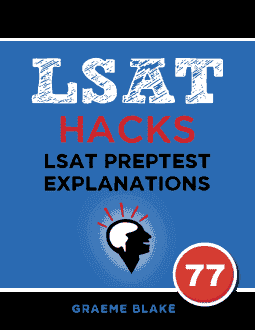QUESTION TEXT: Among small- to medium-sized marine mammals…
QUESTION TYPE: Must Be False
FACTS:
- Longer = deeper
- D > NFS
- ES > WS
ANALYSIS: Unusually, this question is like a logic game. Specifically, a sequencing game. We know the relative ordering of dolphins vs. northern fur seals, and elephant seals vs. Weddell seals.
You may have wondered: does longer really mean deeper? If you skim the answers, it’s clear this has to be the case. Otherwise, the question wouldn’t make sense. Don’t get hung up in technicalities when it’s clear there’s only one plausible interpretation of a given statement.
In another circumstance, I could see such a statement not being definitive, and there being other factors. E.g. “The healthier your food, the longer you live” clearly shouldn’t mean that food is the only factor. But if you consider the full circumstances of this question and the answers, the question is only possible if longer = deeper, so it’s silly to fret about whether that isn’t the case.
Once you equate the two terms, this question is easy. Just go through the answers and see which one violates one of the ordering facts. I drew the diagrams below for each answer and checked them against the diagrams from the stimulus. A, B, C and E are consistent with the stimulus. D contradicts it. I wouldn’t say this question is hard. It’s just unfamiliar. The logic is actually extremely easy.
___________
- ES > DS > WS,
- D > WS > NF
- WS > D > NFS
- CORRECT. WS > D > NFS > ES. This diagram contradicts the diagrams from the stimulus. WS can’t be before ES.
- ES > NFS > WS

Free Logical Reasoning lesson
Get a free sample of the Logical Reasoning Mastery Seminar. Learn tips for solving LR questions


Hi, I’m still struggling to see how a conclusion about dolphins relative to Weddell seals can be made. How is it that you can conclude Elephant seals can hold their breath longer than dolphins when the stimulus only compares Dolphins to northern fur seals?
It seems to me that the stimulus presents two sets of comparisons that don’t allow you to conclude anything between the sets. Can you help me see how you can make a claim about one point in a set and a point from the other set?
Thanks!
The stimulus doesn’t give enough info to compare the two sets on their own, but the answers add new information that we can combine with the information from the stimulus. This is how we can make the deduction. It’s easier to think of the two comparison metrics as the same (submerged longer = greater depths). The stimulus gives these two comparisons:
Dolphins > Northern
Elephant > Weddell
Like you said, because the stimulus doesn’t give an idea of how the two comparisons are related to one another, you can’t tell the exact order of which animal can stay submerged longer/dive to greater depths. If it helps, you can think of this question like a sequence logic game where you have four objects that you need to rank. We can diagram it like this:
D…N
E…W
Where the animal to the left is able to be submerged longer/dive to greater depths.
Answer choice D gives the following constraints:
Northern > Elephant
Weddell > Dolphins
Is this possible? No! If we combine the constraint N > E with the stimulus D > N, we get this sequence:
D – N – E
So far this is fine, but then the stimulus also gives us E > W. But Answer Choice D’s second constraint, W > D, presents a complication and contradicts the E > W from the stimulus. W can’t possibly submerge longer/dive deeper than D if it’s also supposed to submerge shorter/dive shallower than E. Thus, Answer Choice D is wrong.